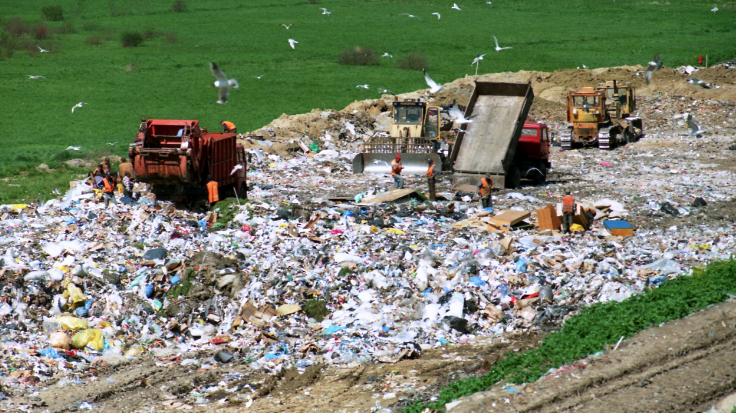
Until very recently, China was the world’s largest global importer of most types of recyclable materials, accepting more than 7.3 million metric tons of waste products annually from the US and other developed countries.
In July of 2017, China announced a series of new restrictions on imported waste materials, including an outright ban on 24 different categories of recyclables to be phased out within the year. China’s import ban on recycled commodities has had a significant impact on waste collection and recycling throughout the U.S. We’re not in a full-on crisis yet, but let’s examine some of the fall-out from China’s decision on the U.S. trash and recycling industry.
Our Vanishing Landfills
Hauling trash to a landfill is the dominant trash disposal method in the U.S., but the number of landfills has been decreasing for decades. Around 1990, there were roughly 8,000 operating landfills in the US. Today, that number is closer to 1,200, and the siting and permitting of new landfills is nearly impossible. If this pattern continues, the U.S. could run out of landfill space sometime between 2031-2036. As the next decade progresses, communities will need to find affordable disposal options for solid waste through alternative disposal methods.
Fortunately, a number of potential alternatives to landfilling or incinerating solid waste have begun to emerge, including promising technologies like:
- Pyrolysis is the thermal decomposition of materials at elevated temperatures in the absence of oxygen. Most commonly used in the treatment of organic material, pyrolysis produces volatile products and leaves a solid, carbon-enriched residue called Extreme pyrolysis, which leaves mostly carbon as the residue, is called carbonization. Considered the first step in the processes of gasification or combustion, the uses of pyrolysis to convert biomass into syngas and biochar, waste plastics back into usable oil, or waste into safely disposable substances are being explored. (Thermal)
- Gasification is another thermal decomposition method of waste that converts organic- based or fossil fuel-based carbonaceous materials into carbon monoxide, hydrogen and carbon dioxide by reacting the material at high temperatures (>700 °C), without combustion, with a controlled amount of oxygen and/or steam. (Thermal)
- Anaerobic digestion is the process by which organic matter such as animal or food waste is broken down to produce biogas and biofertilizer. This process happens in the absence of oxygen in a sealed, oxygen-free tank called an anaerobic digester. (Biological)
At this point, these methodologies have either not been successfully scaled up to manage municipal quantities or are limited to specific segments of the waste stream. Additional research and testing are expected to result in more pilot projects designed to explore the uses and benefits of these thermal and biological waste processing alternatives.
Increase in Domestic Processing
Without the option of exporting the trash problem to Asia, the U.S. and other developed countries are getting more serious about upping their domestic processing game. For example, at least $1 billion has been invested in closed-down paper mills around the US, re-engineering them to allow waste paper processing. Our ability to recycle plastic and scrap metal is also on the rise.
Curbside Recycling: The Struggle is Real
Community curbside recycling programs, once considered promising and environmentally impactful, are struggling. In the past two years, many communities are abandoning curbside recycling— a trend that’s expected to continue. The few that continue are likely to focus on only the most profitable commodities to recycle, refusing to collect problematic materials like glass and plastic.
Innovative new businesses are exploring ways to connect residents to facilities that accept materials that curbside programs reject. Take-back programs like those for plastic bags at grocery stores and toner cartridges at office supply stores will serve as a model for additional materials.
Technological Transformations
Technological advances will also continue in traditional sectors of the disposal industry. Robots and scanners will sort waste and recyclables with increasing accuracy. And equipment from household recycling bins to landfill compactors will join the internet of things, providing ever more granular data for governments and processors.
Brand new recycling technologies are also on the horizon, especially for plastics. New plastic formulas that are more easily recycled have the potential to replace some of the more problematic, harder-to-break-down products in use today.
